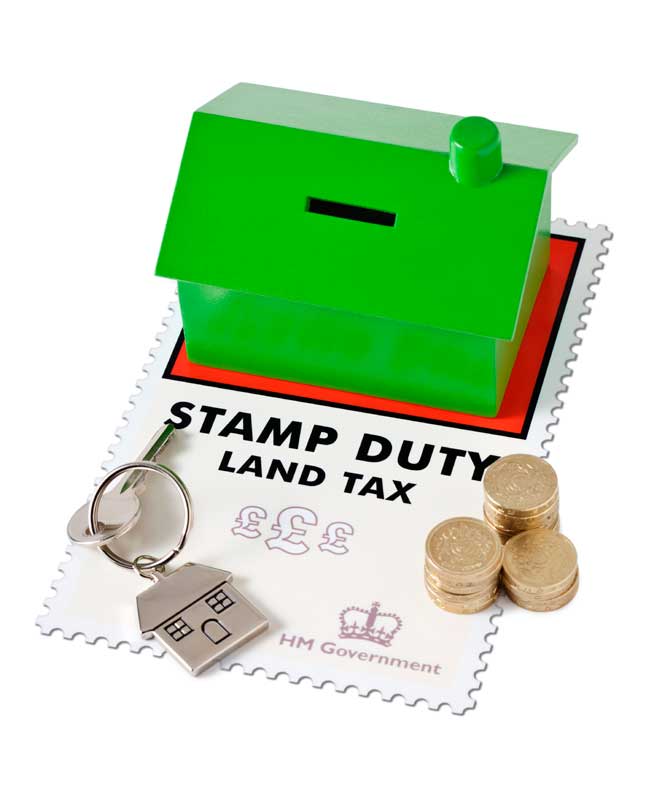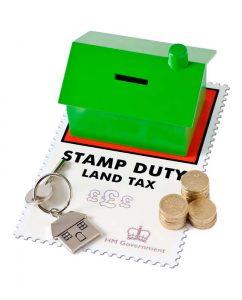If you are thinking of buying your first home, looking at moving, or buying a second home, then you may have to pay Stamp Duty to the Government along with associated mortgage costs. This can be quite expensive, so it is important to understand what Stamp Duty is if you need to pay it and when payment is due.
Chancellor of the Exchequer, Rishi Sunak, announced a recent change to Stamp Duty, whereby there is no Stamp Duty payable for properties under £500,000 that you intend to live in.
So what do these changes mean, and how could they affect you? Here we try to explain it all to you in our helpful guide!
 What is Stamp Duty and how much does it cost?
What is Stamp Duty and how much does it cost?
Stamp Duty (SDLT) is a tax you might have to pay if you buy a residential property or a piece of land in England and Northern Ireland. Please see below for the different rates of Stamp Duty that may apply to you and your purchase.
What are the charges for Stamp Duty in the UK?
As a result of a recent change of Stamp Duty policy by the government, if the property you wish to purchase is going to be your main residential home, you will not pay any stamp duty on it at all if – as long as it costs £500,000 or less.
The next portion of the property’s price (£500,001 to £925,000) will be taxed at 5%, £925,001 to £1.5 million will be taxed at 10%. The remaining amount (over £1.5 million) will be taxed at 12%.
Example:
For example, if you buy a house for £600,000, the Stamp Duty you will pay is calculated as follows:
0% on the first £500,000 = £0
5% on the final £100,000 = £5,000 (this is because the rate of 5% applies up to property value of £925,000)
Total Stamp Duty Due = £5000
This is a saving of £15,000 based on the Stamp Duty rates that were in place before 8 July 2020 when the government announced the stamp duty holiday.
How will you benefit from this rate change?
Changes to the current stamp duty rates in England and Northern Ireland mean whilst they were normally paid on land or property sold for £125,000 or more, this has temporarily increased to £500,000.
Previously first-time buyers did not pay any stamp duty on properties up to £300,000 in value, but since the announcement on 8th July 2020, this has temporarily increased to £500,000 also.
When will the reduction in Stamp Duty end?
This additional benefit has been introduced to help boost the flagging property market and will be available until 31st March 2021. After this date, the previous stamp duty rules will come back into force.
Will landlords’ benefit from the Stamp Duty holiday?
Landlords and second home buyers are also eligible for the tax cut, but will still have to pay the extra 3% of stamp duty they were charged under the previous rules.
Anyone buying an additional residential property worth £40,000 or more will have to pay additional stamp duty. Your Conveyancer or solicitor should advise the rate of stamp duty that will become payable.
Higher rates for additional properties
There is a 3% higher rate for purchases of additional dwellings on top of the revised standard rates for the period 8 July 2020 to 31 March 2021.
The following rates apply:
| Property or lease premium or transfer value | Stamp Duty Rate |
| Up to £500,000 | 3% |
| The next £425,000 (the portion from £500,001 to £925,000) | 8% |
| The next £575,000 (the portion from £925,001 to £1.5 million) | 13% |
| The remaining amount (the portion above £1.5 million) | 15.00% |
Can I still benefit from the new Stamp Duty changes if I’ve already completed on a purchase?
The Stamp Duty holiday applies from 8 July 2020 which means anyone completing a property purchase before that date, will have to pay the full normal stamp duty.
Stamp duty is payable upon completion, so if you’ve exchanged contracts and are currently waiting for completion, you will be able to benefit from the change.
How much could you save on Stamp Duty?
Before the stamp duty holiday (not first-time buyers), if you bought a house for £275,000, for instance, the stamp duty you would have had to pay would have been £3,750, That’s based on 0% duty on the first £125,000 then you would have paid 2% on the next £125,000 (£2,500), plus 5% on the final £25,000 (£1,250). As a result of the Stamp Duty holiday, no tax is due, saving you £3,750.
There is a calculator that can be used to assess how much will need to be paid; click here.
If you were to purchase a property to the value of £750,000 as your main residence then the total Stamp Duty payable would be £12,500. You pay 0% up to £500,000, You pay 5% up to £925,000 = £12,500
Who can benefit from the new rates of Stamp Duty in Scotland and Wales?
In Scotland, the rates that are paid on Land and Buildings Transaction Tax are:
2% on £145,001-£250,000,
5% on £250,001-£325,000,
10% on £325,001-£750,000
12% on any value above £750,000.
Scottish landlords will pay an extra 4% on Land and Buildings Transaction Tax, on top of standard rates.
In Wales, the rates on Land Transaction Tax are:
3.5% on £180,001-£250,000
5% on £250,001-£400,000
7.5% on £400,001-£750,000
10% on £750,001-£1.5m
12% on any value above £1.5m.
Welsh landlords do pay an extra 3% Land Transaction Tax on top of the standard rates.
Do you always have to pay Stamp Duty?
There are other circumstances in which Stamp Duty is either not payable or can be reduced:
- If you are slightly over the rate band for the percentage of Stamp Duty, If the price is only just within a higher band, it may be worth asking the seller or the estate agent, if they would be willing to accept a slightly lower price, this way saving you on additional Stamp Duty or not paying anything at all.
- In the event of a transfer of property in the case of separation or divorce. If you’re divorcing or separating from your spouse or partner, there’s no Stamp Duty to pay if you transfer a percentage of your home’s value to them.
- Transfer of deeds. If you transfer the deeds of your home to someone else – either as a gift or in your will – they will not have to pay Stamp Duty on the market value of the property.
However, if you exchange properties with another person, you will each have to pay Stamp Duty on the property you receive, based on its market value.
When will the Stamp Duty rates change?
On the 1st April 2021, the reduced rates shown will revert to the rates of stamp duty charges that were in place prior to 8th July 2020.
Buying a Property and Need Mortgage Advice?
The Money Hub is an authorised organisation, on hand to provide mortgage advice to clients. We are a ‘Whole of Market’ mortgage broker, so if you would like advice please just get in touch with the friendly and helpful team today.
DISCLAIMER: These articles are for information only and should not be construed as advice. You should always seek advice prior to taking any action.

 What is Stamp Duty and how much does it cost?
What is Stamp Duty and how much does it cost?